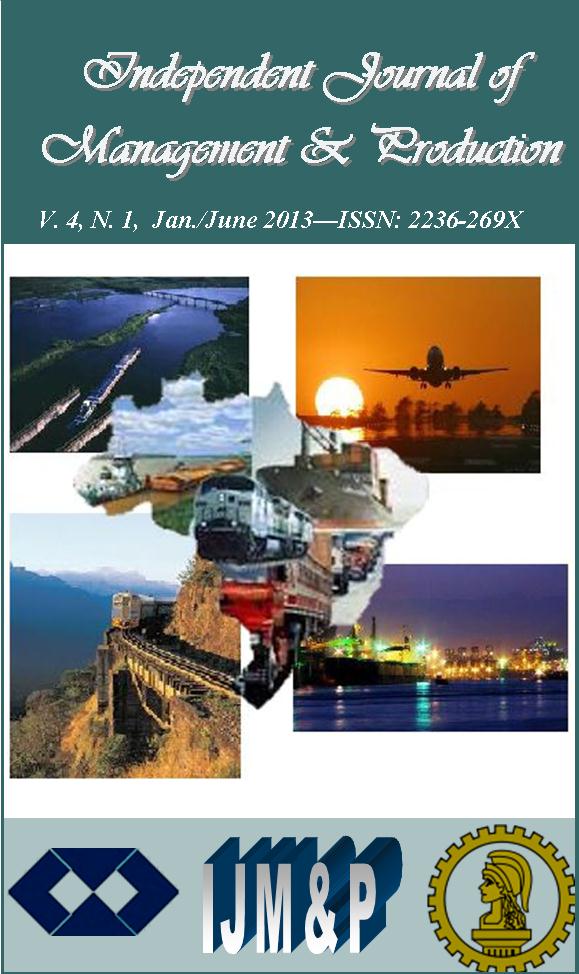Performance Indexes: Similarities and Differences
Main Article Content
صندلی اداریAbstract
The investor of today is more rigorous on monitoring a financial assets portfolio. He no longer thinks only in terms of the expected return (one dimension), but in terms of risk-return (two dimensions). Thus new perception is more complex, since the risk measurement can vary according to anyone’s perception; some use the standard deviation for that, others disagree with this measure by proposing others. In addition to this difficulty, there is the problem of how to consider these two dimensions.
The objective of this essay is to study the main performance indexes through an empirical study in order to verify the differences and similarities for some of the selected assets. One performance index proposed in Caldeira (2005) shall be included in this analysis.
Downloads
Article Details
1. Proposal of Policy for Free Access Periodics
Authors whom publish in this magazine should agree to the following terms:
a. Authors should keep the copyrights and grant to the magazine the right of the first publication, with the work simultaneously permitted under the Creative Commons Attribution-NonCommercial-ShareAlike 4.0 that allows the sharing of the work with recognition of the authorship of the work and initial publication in this magazine.
b. Authors should have authorization for assuming additional contracts separately, for non-exclusive distribution of the version of the work published in this magazine (e.g.: to publish in an institutional repository or as book chapter), with recognition of authorship and initial publication in this magazine.
c. Authors should have permission and should be stimulated to publish and to distribute its work online (e.g.: in institutional repositories or its personal page) to any point before or during the publishing process, since this can generate productive alterations, as well as increasing the impact and the citation of the published work (See The Effect of Free Access).
Proposal of Policy for Periodic that offer Postponed Free Access
Authors whom publish in this magazine should agree to the following terms:
a. Authors should keep the copyrights and grant to the magazine the right of the first publication, with the work simultaneously permitted under the Creative Commons Attribution-NonCommercial-ShareAlike 4.0 [SPECIFY TIME HERE] after the publication, allowing the sharing of the work with recognition of the authorship of the work and initial publication in this magazine.
b. Authors should have authorization for assuming additional contracts separately, for non-exclusive distribution of the version of the work published in this magazine (e.g.: to publish in institutional repository or as book chapter), with recognition of authorship and initial publication in this magazine.
c. Authors should have permission and should be stimulated to publish and to distribute its work online (e.g.: in institutional repositories or its personal page) to any point before or during the publishing process, since this can generate productive alterations, as well as increasing the impact and the citation of the published work (See The Effect of Free Access).
d. They allow some kind of open dissemination. Authors can disseminate their articles in open access, but with specific conditions imposed by the editor that are related to:
Version of the article that can be deposited in the repository:
Pre-print: before being reviewed by pairs.
Post-print: once reviewed by pairs, which can be:
The version of the author that has been accepted for publication.
The editor's version, that is, the article published in the magazine.
At which point the article can be made accessible in an open manner: before it is published in the magazine, immediately afterwards or if a period of seizure is required, which can range from six months to several years.
Where to leave open: on the author's personal web page, only departmental websites, the repository of the institution, the file of the research funding agency, among others.
References
CALDEIRA, A. M. (2005) Seleção de Carteiras Utilizando Técnicas Não Paramétricas. Tese de Mestrado, Pontifícia Universidade Católica do Rio de Janeiro.
FISHBURN, P. (1980) Foundations of risk measurement: I. Risk as a probability of loss. Management Science, n. 30, p. 396-406.
JENSEN, M. C. (1968) The Performance of Mutual Funds in the Period 1945-1964. The Journal of Finance, p. 389-416.
LINTNER, J. (1965) Security Prices, Risk, and Maximal Gains from Diversification. Journal of Finance, n. 20, p. 394-419.
PARZEN, E. (1962) On Estimation of a Probability Density Function and Mode. Annals of Math. Statistics, n. 33, p. 1065-1076.
PHILIPPATOS, G.;WILSON, C. (1972) Entropy, Market Risk, and the Selection of Efficient Portfolios. Applied Economics, n. 4, p. 209-220.
PHILIPPATOS, G.; GRESSIS, N. (1975) Conditions of Equivalence Among EV, SSD and EH Portfolio Selection Criteria: The Case for Uniform Normal and Lognormal Distributions. Management Science, p. 617-625.
SHARPE, W. (1966) Mutual :Fund Performance. Journal of Business, p. 119-138.
SHARPE, W. (1964) Capital asset prices: A theory of capital market equilibrium under conditions of risk. Journal of Finance, n. 19, p. 425-442.
SORTINO, F.; VAN DER MEER, R. (1991) Downside risk. The journal of Portfolio Management, p. 27-31.
TOBIN, J. (1958) Liquidity Preference as Behavior towards Risk. Review of Economic Studies, n. 25, p. 65-86.
TREYNOR, J. (1965) How to Rate Management of Investment Funds. Harvard Business Review, n. 43, p. 63-75.
TREYNOR, J. L. (1965) Toward a Theory of Market Value of Risk Assets. (unpublished manuscript, undated).





